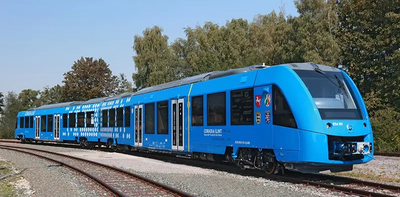The Future is being Tested, Right Now - Zero-Emission Trains!

To be fair there are several different approaches to making short-distance suburban rail services quieter, greener, less polluting and more efficient. Most involve batteries or fuel cells and relatively short routes. However, this is one which caught my eye recently.
Last year the French engineering company Alstom presented a zero-emission, self-powered train at the annual InnoTrans trade fair in Berlin. It was a modified version of a service-proven, diesel-powered unit, the Coradia Lint 54, with hydrogen fuel cells and hydrogen storage replacing the diesel engines.
Being further developed under the name of Coradia iLint, Alstom is exploring commercial sales in Germany. There are currently over 4,000 diesel multiple rail units on the German rail network and, being a major global producer of chemicals, Germany already has an extensive hydrogen pipeline infrastructure. In addition there are plans to have 400 hydrogen refuelling stations for road vehicles in operation by 2023.
Such a large country-wide hydrogen grid does not yet exist in the UK, but perhaps the German experience might offer some pointers to the feasibility of battery powered rail cars with end-station recharging using standard Li-ion technology.
The Abbey Line, between Watford and St Albans might be a suitable test-bed perhaps?
